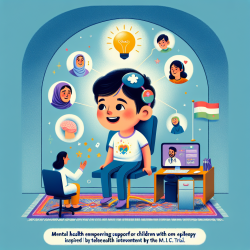Understanding Memory Impairment through Mathematical Modeling
As practitioners dedicated to enhancing the cognitive outcomes of children, it's vital to continuously refine our skills and methodologies. The research article "Overall Memory Impairment Identification with Mathematical Modeling of the CVLT-II Learning Curve in Multiple Sclerosis" offers valuable insights that can aid in this endeavor.
The Research at a Glance
The study focuses on the California Verbal Learning Test: Second Edition (CVLT-II) and its application in assessing memory impairment in individuals with Multiple Sclerosis (MS). The research introduces a mathematical model to better predict memory impairment by analyzing learning curves, specifically through coefficients B3 and B4. These coefficients provide a more accurate classification of memory impairments than traditional CVLT-II measures.
Key Findings and Their Implications
- Predictor Variables: The study highlights coefficients B3 (readiness to learn) and B4 (ability to learn) as superior predictors for identifying memory impairment.
- Gender Differences: The research confirms that females generally outperform males in verbal learning tasks, necessitating gender-specific analyses for accurate assessments.
- Cluster Analysis: By dividing participants into clusters based on high and low recall scores, practitioners can achieve nearly 100% accuracy in classifying memory impairments.
Implementing the Findings
For practitioners, integrating these findings into practice involves a few key steps:
- Adopt the use of mathematical modeling to analyze learning curves, focusing on coefficients B3 and B4.
- Consider gender-specific strategies when assessing verbal learning and memory.
- Utilize cluster analysis to enhance the precision of memory impairment classifications.
Encouragement for Further Research
While this study provides a robust framework for understanding memory impairment, it also opens avenues for further research. Practitioners are encouraged to explore additional variables that may influence learning curves and memory assessments. Such research can lead to even more refined and individualized therapeutic approaches.
To read the original research paper, please follow this link: Overall Memory Impairment Identification with Mathematical Modeling of the CVLT-II Learning Curve in Multiple Sclerosis.










